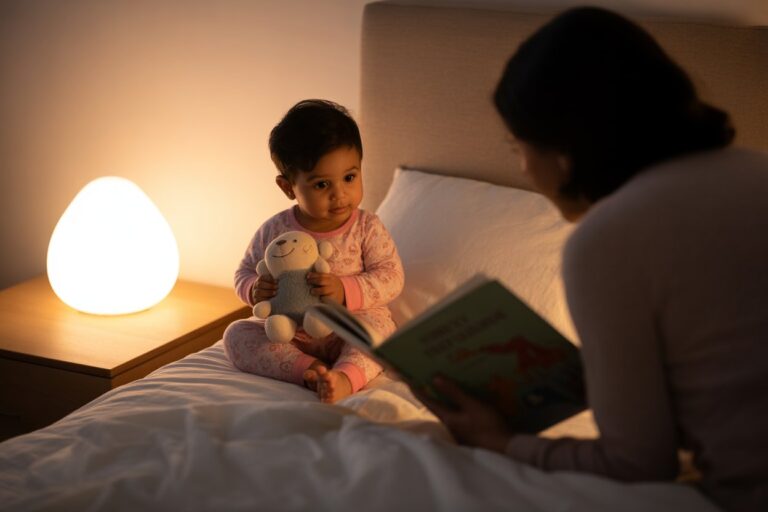Tantrums Are Not “Nautanki” – They’re Communication 🧠
The floor rolls. The screaming. The “NOOO!” in the middle of a supermarket. If your toddler has started throwing tantrums — you’re not alone. And no, your child is not “spoilt” or “stubborn.”
Tantrums are a normal part of child development, especially between 18 months to 4 years. They’re simply your toddler’s way of expressing emotions that they don’t yet have the words or self-control to manage.
What Causes Tantrums in Toddlers?
Here are the most common reasons your toddler may be losing it:
| Trigger | What’s Happening in Their Brain |
|---|---|
| Hunger or tiredness | Brain goes into survival mode — meltdown alert! |
| Sudden transitions | “I wasn’t done playing! Why are we rushing?” |
| Big emotions, small vocabulary | They can’t say “I’m frustrated”, so they show it |
| Lack of control | Saying “No” gives them a sense of power |
| Overstimulation | Too many lights, sounds, or people — system overload |
🔍 Neuroscience Insight: The prefrontal cortex (which helps with decision-making and impulse control) is still developing. That’s why toddlers are often ruled by emotion.
Why It Feels Harder for Some Parents
Many of us grew up in environments where expressing emotions was discouraged. So when our children cry, scream, or throw things, we may feel triggered to react harshly or shut it down.
“Stop crying or I’ll give you a reason to cry!”
“Don’t embarrass me in public!”
“You’re being too dramatic!”
But science now tells us — punishment doesn’t teach emotional control. Co-regulation does. That means: You stay calm first, then help your child calm down.
5 Gentle (But Firm) Ways to Handle Tantrums
1. Acknowledge the Emotion (Not the Behavior)
💬 “You’re really upset that playtime is over. That’s okay to feel.”
🧠 Naming the emotion helps children feel seen.
2. Offer Two Simple Choices
Toddlers crave independence.
💬 “Do you want to wear the red T-shirt or the blue one?”
🎯 Choices reduce power struggles.
3. Stick to Routines
Children feel secure with predictability — regular meals, naps, and bedtime go a long way.
⏰ Less unpredictability = fewer meltdowns.
4. Redirect Instead of Reacting
💬 “You can’t jump on the sofa, but let’s jump on this pillow mat.”
🎨 Offer a fun alternative without yelling.
5. Model Calmness
Your tone and body language matter. Toddlers mirror your energy.
🧘🏽♀️ Take deep breaths and lower your voice instead of raising it.
When to Seek Support
Most tantrums are part of normal development, but consult a pediatrician if:
🚩 Tantrums last over 20 minutes frequently
🚩 Your child regularly harms themselves or others
🚩 You notice delays in speech or communication
🚩 They’re unable to calm even with your help
Normalize Emotions, Not All Behaviors
It’s okay for your toddler to feel angry, disappointed, or frustrated — those are human emotions. What we teach them is how to express those feelings safely and respectfully.
💡 They’re not giving you a hard time. They’re having a hard time.
You don’t need to be perfect — just present, calm, and consistent.
📚 Bonus: Tantrum-Soothing Affirmations for Toddlers
Try saying these during a meltdown:
- “You’re safe. I’m right here.”
- “We can feel big feelings and still be kind.”
- “Let’s take a deep breath together.”
🧸 Stick these on your fridge or create a calming corner with flashcards.





Reading this is like observing gentle water movement, with each sentence unfolding naturally. The text nurtures reflection, attentive presence, and mindful engagement.